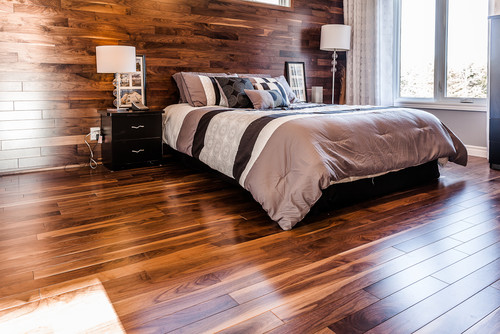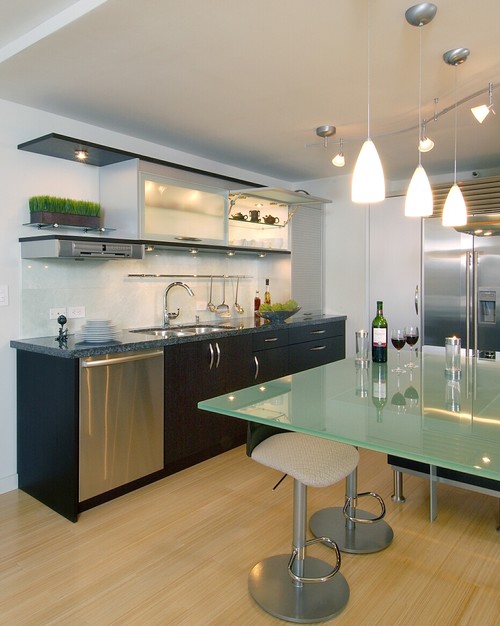 At some time or another, you’re bound to think about replacing the flooring in one or more rooms. Hard-surface flooring is a perennial favorite for remodeling your home, as it’s easy to maintain, great for allergy sufferers, and won’t harbor dirt and germs the way carpeting can. The challenge is picking through all your flooring options.
At some time or another, you’re bound to think about replacing the flooring in one or more rooms. Hard-surface flooring is a perennial favorite for remodeling your home, as it’s easy to maintain, great for allergy sufferers, and won’t harbor dirt and germs the way carpeting can. The challenge is picking through all your flooring options.
Hard flooring costs are as varied as the types of materials you have to choose from. HomeWyse uses nationwide materials and installation costs to create averages that will give you a good working knowledge of what to expect from the flooring options you like, and that's where our data comes from. The costs won’t be precise, but they will compare one option to another.
So before you pick the most beautiful floor you can find, or settle for the most affordable, consider what each option in addition to the costs. To help you in this process, we've compiled a list of some of the most commonly installed floors in the U.S., plus the cost range (includes materials plus installation labor).

Linoleum is one of Your Classic Flooring Options
Linoleum is an old favorite. Although a lot of people say “linoleum” when they really mean “vinyl,” the two are vastly different. Linoleum is a natural, very eco-friendly product that can last for decades. It stands up to a lot of wear, because the color is solid from the surface all the way through the material.
Most people think linoleum is the classic 12-inch square tile. And those tiles offer a lot of versatility, since they come in a rainbow of colors. But it’s also available in sheets, which offer a wide range of designs, like the custom design shown above, that combine two colors into one floor.
The cost of installing linoleum lands is approximately $700 to $900 for a 200-square foot (14 x 14 ft) room.
Laminate Gives the Look of Wood at an Affordable Price
Laminate has grown up a lot since its early days. New laminate looks and feels so much like real wood, it’s often difficult to tell the difference. Laminates are floating floors, which means they aren’t nailed down. They’re one of the best flooring options for any level in the house, including basements. They’re tricky in bathrooms, though, as water can cause laminates to swell, which causes permanent damage that can’t be repaired.
The fabrication of laminate consists of a hard, usually waterproof backing, a pressed fiber material at the center, a wood photographic image over that, and a layer of plastic on top. Planks have interlocking edges, which sometimes “click and lock,” and other times interlock with the aid of glue.
The average cost of laminate installed is between $500 and $700 per 200 square foot room.

Toping the List of Flooring Options is Wood for Beauty
It’s so hard to beat the beauty and durability of a solid wood floor. There are so many species and different varieties within a single species, the decorative possibilities are virtually endless. You can have wood in wide planks (an excellent and authentic choice in a Colonial home), rustic finishes, narrow strips, parquet tiles, or even cork in sheets or tiles. That’s right, cork is wood. Technically it’s the bark of the cork tree, but it is wood. (Read: Tips for Selecting Wood Flooring)
Wood floors have renewability going for them, too. With the exception of cork, wood floors can be sanded down and refinished if damage happens, and the floor will often look as good, if not better, than before.
A wood floor installed, will cost between $1,500 and $2,000 for 200 square feet, but exotic hardwoods typically cost more.
Engineered Wood is a Durable, Versatile Choice
Engineered wood is nearly impossible to detect alongside solid wood. The top, which is the wear layer, is a slice of carefully selected wood grain. Under the wear layer, there are several other layers of wood laminated together. This creates a strong, warp-resistant wood floor that is even appropriate in most basements.
Most engineered wood floors can be sanded and refinished at least once, or maybe twice if the wear layer is thicker. But because these floors are usually pre-finished with a tough, factory seal, they may never need anything more than routine care to stay beautiful. Often homeowners narrow their flooring options to wood versus engineered wood, and then it comes down to budget.
Engineered wood is slightly less expensive than solid wood, at approximately $1,000 to $1,300 per 200 square foot room, installed.

Go for an Eco-Friendly Home Remodel with Bamboo
What looks like wood and acts like wood, but isn’t wood at all? Bamboo. It’s actually grass, and a fast-growing grass, too. That makes bamboo one of the most sustainable flooring options in the world. Bamboo grasses can soar in height in just one growing season, so harvesting doesn’t contribute to “deforestation” the way wood floors might.
Bamboo floors are handled in much the same way as laminates. Interlocking panels float on the underlayment, which makes installation fast and clean. Bamboo is usually available in two colors, or at least two tones – dark and light. Light or blonde bamboo is its natural state. Dark bamboo, which is similar to a mahogany tone, is heat treated, which causes the natural, chemical-free, darkening reaction.
Bamboo costs approximately $1,000 to $1,500 to install, per 200 square foot room.

Tile Offers Many Flooring Options – Styles, Colors & Materials
There’s a reason why tile remains one of the most popular flooring choices. Actually, there are lots of reasons. But one of the most important is durability. A tile floor can last as long as the house stands, as long as it’s cared for.
Natural stone is a favorite, and porcelain is a better choice for floors than ceramic. It’s a harder material, so it withstands more abuse than softer ceramic. There are countless possibilities with tile, too. You can have penny tiles in a bathroom, 18-inch travertine on a parlor floor, and classic black and white marble for a checkerboard kitchen.
The cost of tile varies greatly depending on which tile you choose. For example, ceramic costs approximately $750 per 200 square foot room, while the same size room in marble will cost about $1,500.
Don't Overlook High-End Vinyl Flooring Options for Remodeling Your Home
Don’t underestimate vinyl flooring for your home. If you haven’t looked at vinyl samples lately, you might just be “floored” by the wide range of choices, and by the high quality. This is not your mother’s floral-patterned vinyl.
Vinyl is available in tiles and sheet material. Some sheet materials have astonishingly realistic wood grain or tile patterns, and some tiles are designed to use a special vinyl tile grout, which really makes it difficult to see the difference between porcelain or stone. Vinyl planks, which connect with adhesive at the locking seams, mimic wood so realistically in color and texture, you’d almost need to peel it back to know you're not standing on wood.
Vinyl is one of the more affordable floors, costing between $500 and $1,000 per 200 square feet installed.
There's certainly no shortage of flooring options when it comes to hard-surface floors. And they don't have to feel cold, either. Under-floor radiant heating is available for almost every option, but check with the manufacturer first to be sure.
Remodeling your home nearly always includes updating the flooring. Maybe you've got worn carpet or outdated vinyl, or perhaps you're just tired of looking at what you've got and want something new. Whatever the reason, you'll almost certainly find the right choice that fits your budget and your style.
Have you replaced flooring recently, or are you planning to? Which pros and cons are the most important to you?




Leave a Reply